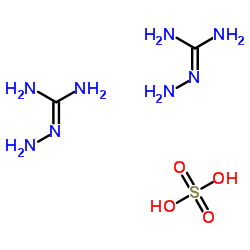Methylglyoxal and carboxyethyllysine reduce glutamate uptake and S100B secretion in the hippocampus independently of RAGE activation.
Fernanda Hansen, Cíntia Eickhoff Battú, Márcio Ferreira Dutra, Fabiana Galland, Franciane Lirio, Núbia Broetto, Patrícia Nardin, Carlos-Alberto Gonçalves
文献索引:Amino Acids 48 , 375-85, (2016)
全文:HTML全文
摘要
Diabetes is a metabolic disease characterized by high fasting-glucose levels. Diabetic complications have been associated with hyperglycemia and high levels of reactive compounds, such as methylglyoxal (MG) and advanced glycation endproducts (AGEs) formation derived from glucose. Diabetic patients have a higher risk of developing neurodegenerative diseases, such as Alzheimer's disease or Parkinson's disease. Herein, we examined the effect of high glucose, MG and carboxyethyllysine (CEL), a MG-derived AGE of lysine, on oxidative, metabolic and astrocyte-specific parameters in acute hippocampal slices, and investigated some of the mechanisms that could mediate these effects. Glucose, MG and CEL did not alter reactive oxygen species (ROS) formation, glucose uptake or glutamine synthetase activity. However, glutamate uptake and S100B secretion were decreased after MG and CEL exposure. RAGE activation and glycation reactions, examined by aminoguanidine and L-lysine co-incubation, did not mediate these changes. Acute MG and CEL exposure, but not glucose, were able to induce similar effects on hippocampal slices, suggesting that conditions of high glucose concentrations are primarily toxic by elevating the rates of these glycation compounds, such as MG, and by generation of protein cross-links. Alterations in the secretion of S100B and the glutamatergic activity mediated by MG and AGEs can contribute to the brain dysfunction observed in diabetic patients.
相关化合物
| 结构式 | 名称/CAS号 | 分子式 | 全部文献 |
|---|---|---|---|
 |
氨基胍半硫酸盐
CAS:996-19-0 |
CH6N4.1/2H2O4 |
|
Modulation of cytochrome P450 2A5 activity by lipopolysaccha...
2015-01-01 [PLoS ONE 10(1) , e0117842, (2015)] |
|
A simple assay for mammalian spermine oxidase: a polyamine c...
2011-01-01 [Methods Mol. Biol. 720 , 173-81, (2011)] |
|
Effects of nitric oxide on ovulation and ovarian steroidogen...
1997-09-01 [Endocrinology 138 , 3630-7, (1997)] |